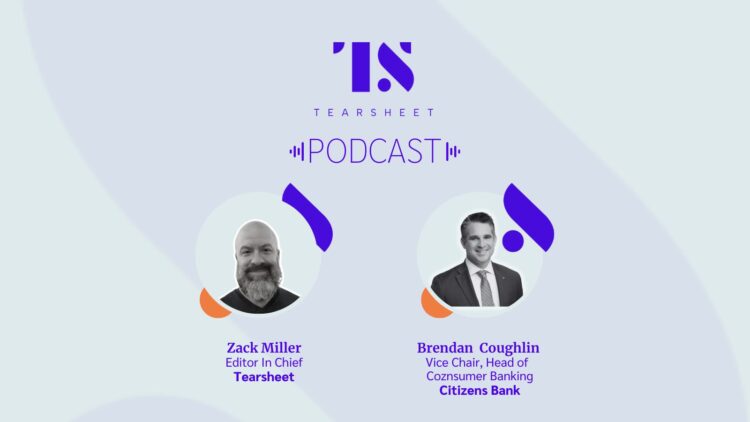‘If you can get Gen Z right, it’s going to build your bank for the future’: Citizens Bank’s Vice Chair, Brendan Coughlin
- Regional banks like Citizens face a variety of challenges, from high interest rates to rising consumer expectations.
- Brendan Coughlin, the bank's Vice Chair and head of consumer banking, joins us on the podcast to discuss how his firm is navigating the challenges and opportunities in this market.

On today’s episode, we have Brendan Coughlin, Vice Chair and Head of Consumer Banking at Citizens Bank, guiding us through the intricate world of banking transformations and how they’re catering to the evolving needs of customers, including the Gen Z demographic.
The conversation unfolds as Brendan shares invaluable insights into the big shifts within the banking sector, accelerated by the pandemic’s digital thrust. He delves into how Citizens Bank navigated this change, emphasizing the critical role of digital while recognizing the enduring significance of in-person interactions, especially for Gen Z, the true digital natives.
We explore the profound evolution of customer expectations, moving beyond mere convenience towards value creation and personalized experiences. Brendan sheds light on Citizens Bank’s strategies, like the bank’s “Citizens Plus” rewards platform and its proactive approach to financial advice, leveraging data and analytics to enhance customer financial confidence.
The discussion extends beyond products and services to encompass broader economic environments, unveiling Citizens Bank’s strategies in navigating economic challenges, their differentiation in the highly competitive landscape, and its concerted efforts to provide a holistic view of customers for personalized offerings while maintaining data privacy and customer trust.
Here’s my conversation with Brendan.
Subscribe: Apple Podcasts I SoundCloud I Spotify I Google Podcasts
The following excerpts were edited for clarity.







